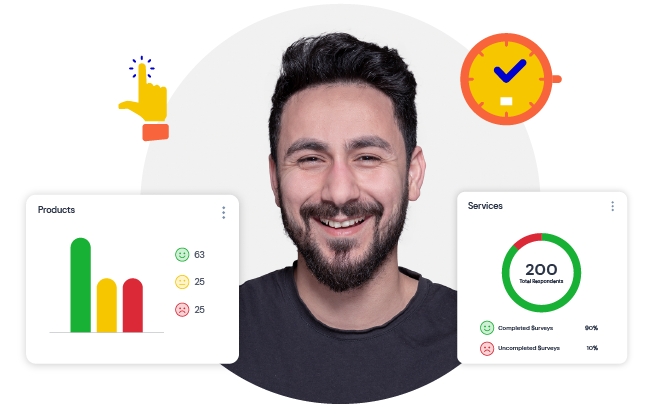Market researchers must be aware of any potential threats to the validity of their study. Response bias is a common factor – it can skew the results of your study, and send your marketing team down the wrong path. An ineffective marketing campaign means time and money wasted, not to mention having to start back at square one.
Whether you’re considering an ambitious new round of market research, or looking to fine-tune and expound upon extant information, being aware of response bias is a must. Learn to understand what response bias is, how to spot it, and stop it in its tracks.
What is Research Response Bias?
In market research, response bias is a blanket term for the different factors that cause respondents to answer surveys incorrectly. This is a particularly glaring issue for online surveys that are interpreted and filled out directly by the participant. Any survey methodology is vulnerable to response bias, making it particularly hard to combat.
What Type of Bias is Response Bias?
While sub-categories do exist, there are generally three major types of bias to be aware of when conducting your market research: information, selection, and confounding.
- Information Bias: This occurs when the variables of the study skew the information so drastically that the results are no longer reflective of the target population.
- Selection Bias: This occurs when the selection of subjects or participants isn’t randomized or diverse enough to get effective measurements or results.
- Confounding Bias: This is a variable related to both the presentation of the survey and the outcome. How the survey is organized and distributed changes the results drastically.
Response bias typically falls under the category of “confounding” because how the survey is worded can be received in various ways, triggering biases. Humans are unpredictable, and we operate on impulse. This means several factors can trigger bias and cause distorted data.
Response Bias Triggering Factors
Before launching your survey, it’s important to consider what may cause response bias. Understanding response bias triggers helps to preemptively troubleshoot common mistakes when constructing your survey.
- Polarizing Language or Subject Matter: Politics, religion, family planning, global events – all are hot-button issues that provoke intense emotional responses. If your survey deals with any of these or other divisive topics, it’s prone to plenty of response bias.
- Advance Knowledge: If your subject knows the survey’s purpose, they may begin pre-determining answers. This leads to demand or social desirability bias, which will be discussed later.
- Mistrust: Subjects that aren’t confident in the security of the information they’re sharing may be inclined to answer dishonestly, or not at all.
- Incentives: Offered incentives should be good enough to encourage participants, but a balance must be struck. Incentives that are too attractive may cause respondents to click through your survey quickly to get to the incentive.
- Survey Length: Participants dislike long, drawn-out, and complex surveys. A good survey should only take about ten minutes to complete. Any longer than that might trigger a speed-run or random answers, or nonresponse bias.
- Complicated/Confusing Wording: The wording you choose for your questions plays a major role in bias potential. Questions that are hard to understand will often be answered randomly, with a neutral response, or cause complete survey abandonment.

Types of Response Bias and How to Avoid Them
There are several major types of response bias that can hurt your chances of securing meaningful responses.
Extreme Response
Extreme response bias is most common for surveys that utilize a numerical scale, with one number representing “worst” and another being the “best.” An “extreme response” is the repeated selection of the highest or lowest point on the scale. Since this doesn’t offer a realistic, nuanced look at the participant, extreme responses are typically considered invalid.
Factors at play in “extreme response” cases are varied. There are cultural aspects to consider, as well as education level. Neither of these can be influenced by the surveyor, so how can you hope to allay the extreme response?
How to Avoid Extreme Response Bias: Use what you can influence! Carefully worded questions that are clear and neutral in tone help to provoke a thoughtful response. Don’t lead your participants or use polarizing language that elicits an overly emotional response.
Neutral Response
An equally frustrating response to numerical scale surveys is the “all neutral” response. It is, in many ways, less helpful than the extreme response, though both are unusable. This is often a result of a participant not understanding the question fully. It also might be a question that doesn’t engage the participant at all.
How to Avoid Neutral Response Bias: This, once again, can be handled with careful wording. Complex concepts should be broken down into easily understood ideas that appeal to respondents.
Dissent/Acquiescence Bias
Dissent and acquiescence bias are two sides of the same coin. This occurs often in surveys with two possible options. Dissent bias is when a participant answers “negatively” to every question, while acquiescence participants answer all “positively.” This isn’t always obvious but can be spotted when the answers contradict each other. If someone chooses “yes” to conflicting statements, it’s acquiescence bias.
How to Avoid Dissent and Acquiescence Bias: Randomizing and diversifying the types of questions and responses keep the participant engaged mentally and will help avoid a speed-run of repeated answers.
Prestige/Social Desirability Bias
While these are different types of bias, they both deal with the perception.
Firstly, social desirability bias is the result of social conditioning. In questions about personal experiences or beliefs, it’s common for respondents to give what they believe is the “socially acceptable” option in an effort to not look bad.
Meanwhile, prestige bias results from the very human impulse to want to appear in a more flattering light. Participants may inflate their education level, income, social influence, and other similar factors.
How to Avoid Prestige or Social Desirability Bias: This can be tricky! Use indirect questions, anonymity, and third-party survey companies to avoid the impulse for social desirability bias answers. Complete circumvention of prestige bias is not possible, as it’s so ingrained in the human condition. However, it can be allayed with neutrally worded questions that strip away the emotional incentive to be dishonest.
Demand Bias
Demand bias occurs when respondents answer questions with the responses they believe the survey wants. This has everything to do with leading language and expectation. It doesn’t even make sense to take time running a survey with questions that give you the answers you want!
How to Avoid Demand Bias: Avoid leading the participant. Include a text response box so that the participant knows you actually want to hear their opinion. Write-in responses may surprise you with unique insights and can provide the building blocks for innovation.
Bonus: Nonresponse Bias
Response bias suggests that there is a response, albeit a distorted one. Nonresponse bias occurs when a considerable difference exists between the participants who submitted responses and those who didn’t.
Nonresponse bias results from a potential respondent being unable or unwilling to supply information. This can be accidental – like an email sent to the “junk” folder without even being seen – or it can be completely intentional on the respondent’s part. If the survey is longer or more complicated than they had anticipated, you may get a lot of bail-outs!
Avoiding Nonresponse Bias: Offering reasonable incentives and reminders can help to encourage participants to finish and return a survey. Breaking the survey into smaller sections – or shortening it altogether – can also decrease nonresponse as a factor.
CheckMarket Helps Foresee and Avoid Response Bias
CheckMarket can help create effective, carefully worded surveys that bring in real results. Our survey templates are short and easy to understand. They’re designed to elicit thoughtful responses, not knee-jerk reactions.
Some bias is inevitable, but you can account for it, avoid the most damaging kinds, and secure reliable results with CheckMarket’s help. Even better – we operate commitment-free, meaning you pay for what you need, and that’s all.
Checkmarket is trusted around the world – come sign up for free, no credit card required, and launch your marketing study with an advantage.


Leave a Reply